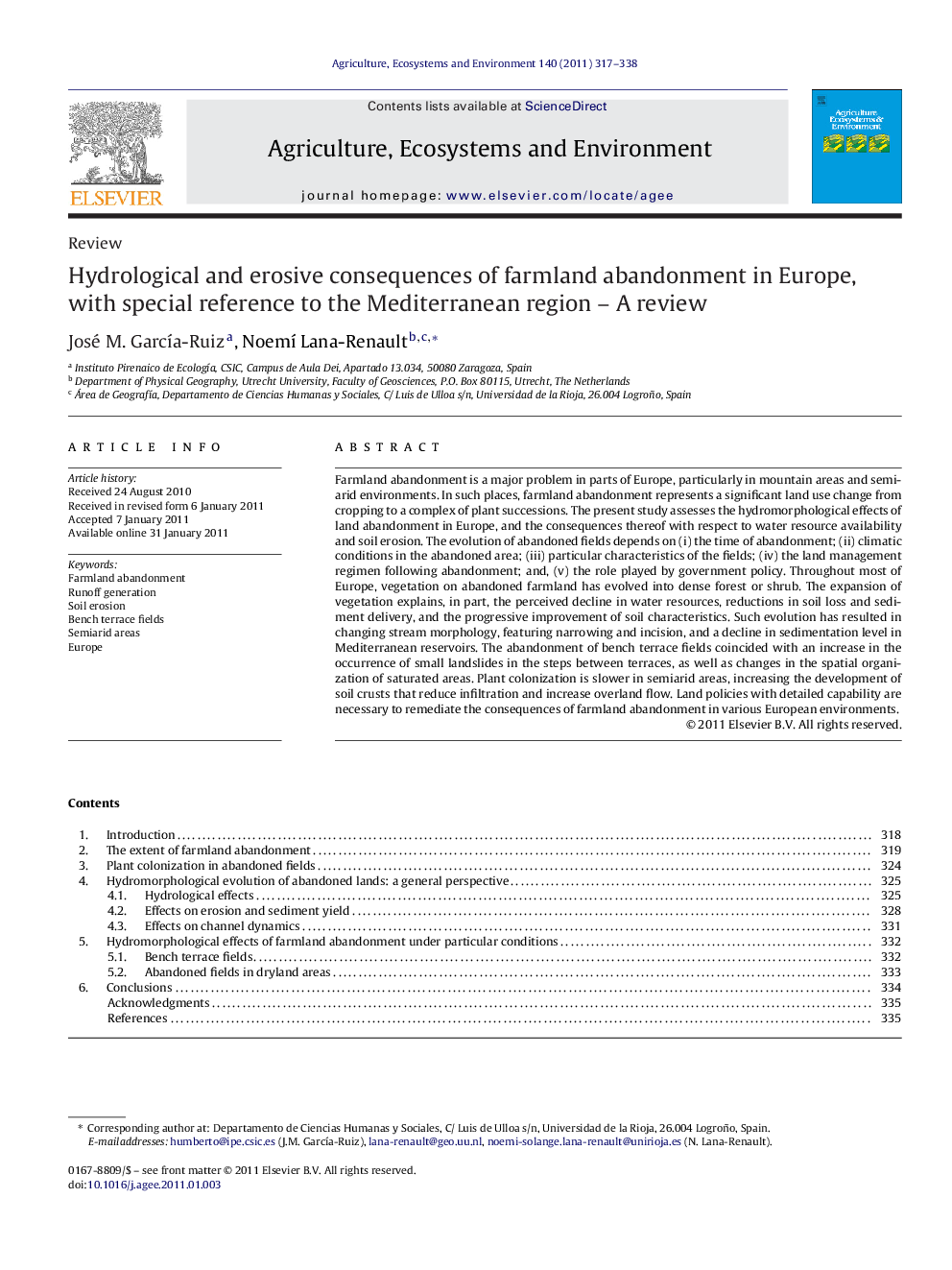| Article ID | Journal | Published Year | Pages | File Type |
|---|---|---|---|---|
| 2414722 | Agriculture, Ecosystems & Environment | 2011 | 22 Pages |
Farmland abandonment is a major problem in parts of Europe, particularly in mountain areas and semiarid environments. In such places, farmland abandonment represents a significant land use change from cropping to a complex of plant successions. The present study assesses the hydromorphological effects of land abandonment in Europe, and the consequences thereof with respect to water resource availability and soil erosion. The evolution of abandoned fields depends on (i) the time of abandonment; (ii) climatic conditions in the abandoned area; (iii) particular characteristics of the fields; (iv) the land management regimen following abandonment; and, (v) the role played by government policy. Throughout most of Europe, vegetation on abandoned farmland has evolved into dense forest or shrub. The expansion of vegetation explains, in part, the perceived decline in water resources, reductions in soil loss and sediment delivery, and the progressive improvement of soil characteristics. Such evolution has resulted in changing stream morphology, featuring narrowing and incision, and a decline in sedimentation level in Mediterranean reservoirs. The abandonment of bench terrace fields coincided with an increase in the occurrence of small landslides in the steps between terraces, as well as changes in the spatial organization of saturated areas. Plant colonization is slower in semiarid areas, increasing the development of soil crusts that reduce infiltration and increase overland flow. Land policies with detailed capability are necessary to remediate the consequences of farmland abandonment in various European environments.
Research highlights▶ Farmland abandonment (F.A.) is the largest land use change in Europe. ▶ F.A. tends to reduce runoff generation and to relocate sediment source areas. ▶ F.A. affects stream morphology and reservoir siltation. ▶ Environmental consequences of F.A. depend on site conditions and post-management. ▶ Land policies in marginal areas should understand the complexity of F.A. processes.
